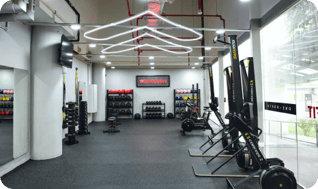Are you preparing for an intense fitness competition and worried about the risk of muscle strains or tears? You’re not alone. Fitness enthusiasts who train rigorously often face muscle-related injuries, which can hinder their performance and delay progress. In this article, we’ll explore the nature of muscle strains, how they occur, and most importantly, how you can prevent and manage them effectively to stay at the top of your game.
Understanding Muscle Strains and Tears
A muscle strain occurs when muscle fibers are overstretched or torn, typically due to sudden, high-intensity movements. This condition is most common in muscles that involve fast, explosive actions, such as the hamstrings, quadriceps, and gastrocnemius (calf) muscles. These muscles are particularly vulnerable because they perform a lot of work during running, jumping, and sprinting—actions that are central to competitive fitness.
Muscle strains tend to occur at the musculotendinous junction, the area where the muscle meets the tendon. However, they can also happen within the muscle belly, depending on the severity of the strain.
Types of Muscle Strains
- Grade 1 Strain: A mild strain where a small number of fibers are damaged. You may feel some soreness the day after but maintain full range of motion and strength.
- Grade 2 Strain: A moderate strain, involving significant tearing of muscle fibers. This strain often causes noticeable pain, swelling, and reduced strength.
- Grade 3 Strain: A severe injury where the muscle completely ruptures. This could either be a detachment from the tendon or a tear within the muscle belly. Severe pain, swelling, and loss of movement are common in these cases, and you may even feel or see a gap where the muscle has torn.
How Do Muscle Strains Happen?
Muscle strains result from the muscle being overloaded beyond its capacity. When training for a fitness competition like Hyrox, you might push yourself to the limit with high-intensity exercises, like sprinting or heavy lifting. These activities can easily lead to strains, especially if your muscles aren’t adequately prepared.
Several factors can contribute to muscle strains
Age: Older athletes are more prone to strains due to reduced muscle elasticity and recovery ability.
Previous Injuries: If you've previously strained a muscle, you're more likely to injure it again.
Overtraining: Pushing too hard without adequate rest can overstress muscles, leading to strain. A sudden increase in exercise intensity or volume also raises the risk of injury.
Prevention: How to Keep Muscle Strains at Bay
-3.png?width=794&height=397&name=Newsletter%20image%20with%20play%20button%20(3)-3.png)
Preventing muscle strains requires a combination of smart training, proper recovery, and attention to your body’s signals. Here are some effective strategies to help you avoid muscle strains while training for fitness competitions in Singapore.
1. Warm-Up with Dynamic Stretches
A thorough warm-up is crucial before any intense workout. While static stretches have their place, dynamic stretches—movements that simulate the actions you'll perform during exercise—are particularly helpful in preparing your muscles for the stress of training. These stretches improve blood flow, increase muscle temperature, and enhance flexibility, all of which help reduce the risk of strains.
Examples of dynamic stretches include leg swings, arm circles, lunges with twists, and high knees. Spend at least 10-15 minutes warming up before any strenuous activity.
2. Pace Yourself in Training
Competitive athletes often feel the pressure to push their limits in every session. However, listening to your body and pacing yourself is key to avoiding overuse injuries like muscle strains. On days when you feel fatigued, it's essential to scale back your intensity rather than forcing yourself through a high-intensity session. This self-regulation will not only prevent injury but also help you perform better on competition day by allowing your body to recover.
3. Rest and Recovery
Rest is as important as training itself, particularly when preparing for high-stakes fitness competitions. Muscles need time to recover from the stress of exercise, and without sufficient recovery, they become prone to strains. Ensure you give your body at least 1-2 days of rest between vigorous training sessions, allowing your muscles to rebuild and regain strength.
Active recovery activities such as light stretching, swimming, or walking can also aid muscle recovery without placing too much strain on the body.
Managing Muscle Strains: What to Do if You Get Injured
Despite your best efforts, injuries can still happen. If you experience a muscle strain, acting quickly and appropriately is key to a speedy recovery.
Immediate Steps to Manage Muscle Strains:
- Rest: Stop the activity immediately to prevent further damage. Resting the affected muscle will give it time to start healing.
- Ice and Elevation: Apply ice to the strained area to reduce swelling and pain. Elevating the injured area above the heart can also help reduce inflammation.
- Compression: Wrapping the muscle with a compression bandage helps control swelling and supports the injured area.
- Gentle Movement: After the initial inflammation subsides, gently move the affected area within a pain-free range to prevent stiffness and encourage blood flow.
Avoid Stretching the Affected Muscle
While it may be tempting to stretch the injured muscle to relieve tension, doing so can worsen the strain. Stretching a muscle that is already torn or overstretched may delay healing and increase the risk of re-injury.
When to Seek Professional Help

Most muscle strains can be treated at home, but some require professional intervention. If you experience any of the following symptoms, it’s time to seek physiotherapy or medical attention:
- Severe pain: Intense pain that doesn’t subside after a few days.
- Significant swelling or bruising: This can be a sign of a more serious tear.
- Inability to move the affected muscle: If you can’t move the muscle or exert strength, you may have a Grade 3 strain, which requires professional care.
- Inability to bear weight: If you can’t walk or put weight on the affected leg, seek help immediately.
The Role of Physiotherapy in Muscle Strain Recovery
If you’re dealing with moderate to severe muscle strain, a physiotherapist can provide invaluable support to aid recovery. At UFIT Health and Fitness, our physiotherapists work with athletes across Singapore to help them return to competition safely and effectively.
Physiotherapy treatments for muscle strains include:
- Manual therapy: Techniques such as massage or joint mobilization to reduce pain and improve flexibility.
- Targeted exercises: Strengthening and flexibility exercises tailored to your injury, helping you recover faster and prevent future strains.
- Modalities: Use of therapies like ultrasound, shockwave therapy, or electrical stimulation to reduce inflammation and promote healing.
Muscle strains are a common injury for active individuals preparing for fitness competitions like Hyrox Singapore. By understanding the causes of muscle strains and taking proactive steps to prevent them, you can keep your body in peak condition and stay competitive. If you do experience a strain, proper management and timely intervention from a physiotherapist can help you recover faster and return to your training stronger than ever. Remember, smart training and recovery are the keys to long-term success in your fitness journey.


.png?width=301&height=187&name=Website%20Navigation%20Images%20(3).png)

-1.jpg?width=1984&height=1196&name=UFIT%20Club%20Street%20Front%20(4)-1.jpg)






